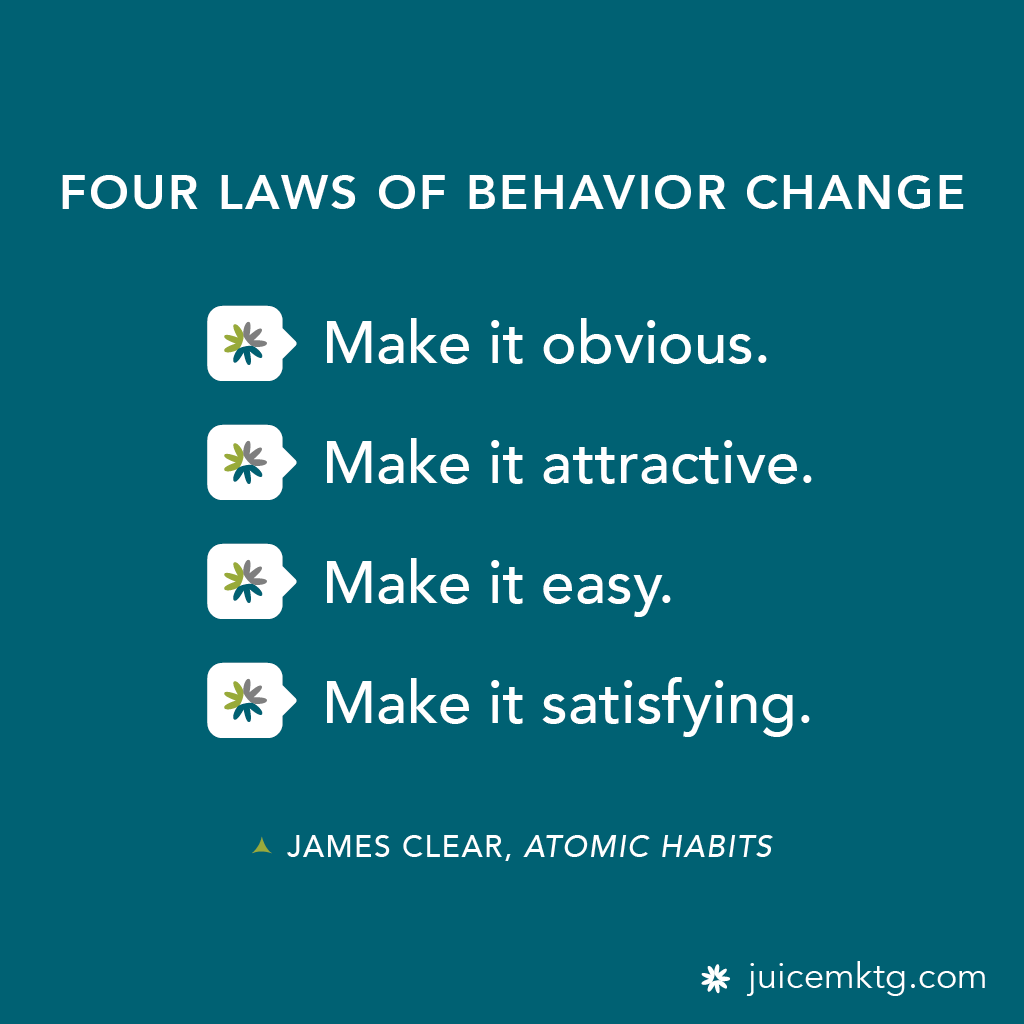
The 1st Law of Behavior Change is to make it obvious. One of the best ways to build a new habit is to identify a current habit you already do each day and then stack your new behavior on top.

When the moment of action occurs, there is no need to make a decision. Once an implementation intention has been set, you don’t need to wait for inspiration to strike. The format for creating and implementation intention is: “When situation X arises, I will perform response Y.” Implementation intentions leverage both of these cues. The two most common cues are time and location. Strategies like Pointing-and-Calling and the Habit Scorecard are focused on getting you to recognize your habits and acknowledge the cues that trigger them, which makes it possible to respond in a way that benefits you. The process of behavior change always starts with awareness. Until you make the unconscious conscious, it will direct your life and you will call it fate. You can notice an opportunity and take action without dedicating conscious attention to it. You don’t need to be aware of the cue for a habit to begin. Together, these four steps form a neurological feedback loop that ultimately allows you to create atomic habits. The cue triggers a craving, which motivates a response, which provides a reward, which satisfies the craving and, ultimately, becomes associated with the cue. The process of building a habit can be divided into four simple steps: cue, craving, response, and reward. The focus should always be on becoming that type of person, not getting a particular outcome.

In order to make a meaningful difference, habits need to persist long enough to break through this plateau - what I call the Plateau of Latent Potential. Success is the product of daily habits - not once-in-a-lifetime transformations. Making a choice that is 1 percent better or 1 percent worse seems insignificant in the moment, but over the span of moments that make up a lifetime these choices determine the difference between who you are and who you could be. What starts as a small win or a minor setback accumulates into something much more. Conversely, if you get 1 percent worse each day for one year, you’ll decline nearly down to zero. Here’s how the math works out: if you can get 1 percent better each day for one year, you’ll end up thirty-seven times better by the time you’re done.

The difference a tiny improvement can make over time is astounding. Improving by 1 percent isn’t particularly notable - sometimes it isn’t even noticeable - but it can be far more meaningful, especially in the long run. But with better habits, anything is possible. With the same habits, you’ll end up with the same results. We all deal with setbacks but in the long run, the quality of our lives often depends on the quality of our habits. Changes that seem small and unimportant at first will compound into remarkable results if you’re willing to stick with them for years.


 0 kommentar(er)
0 kommentar(er)
